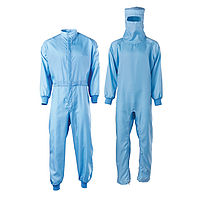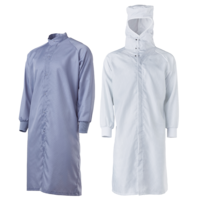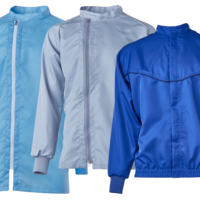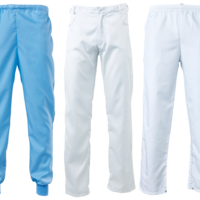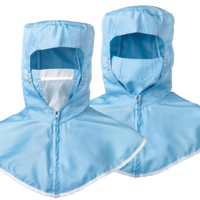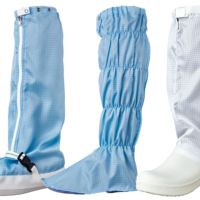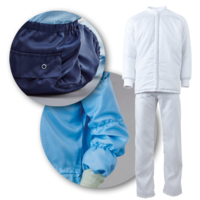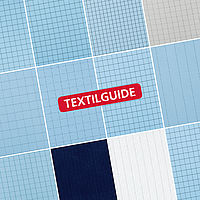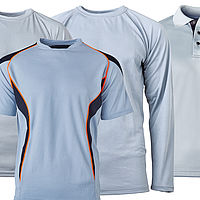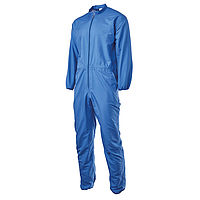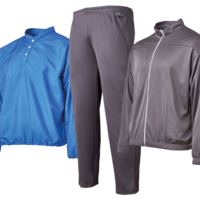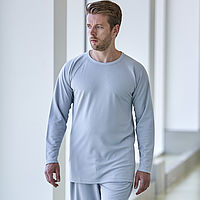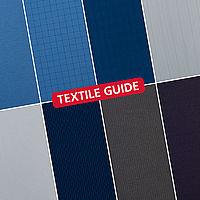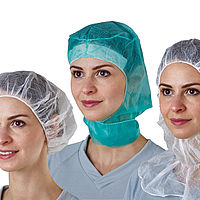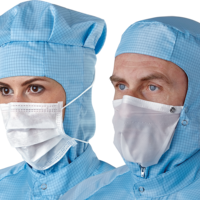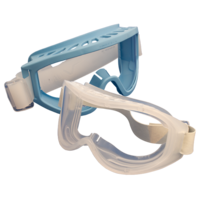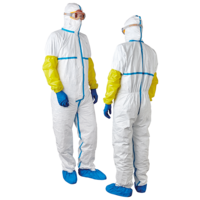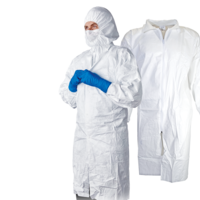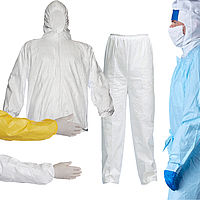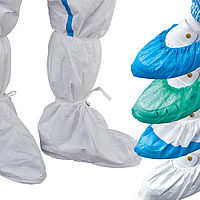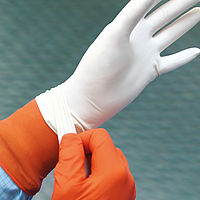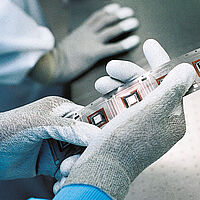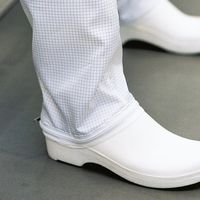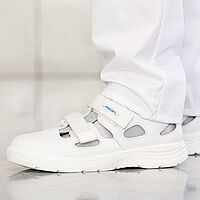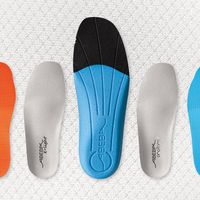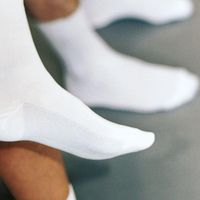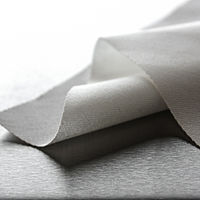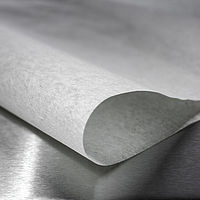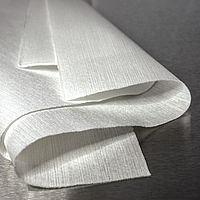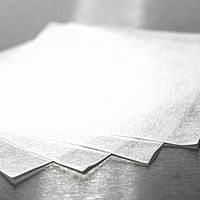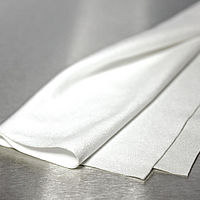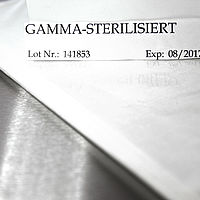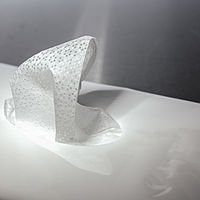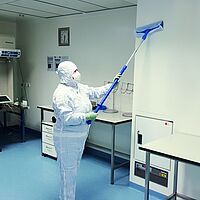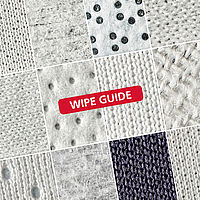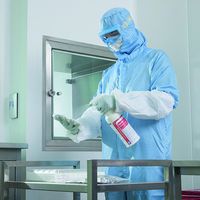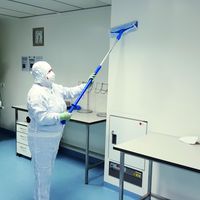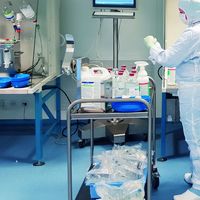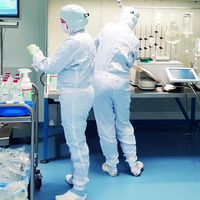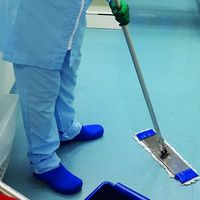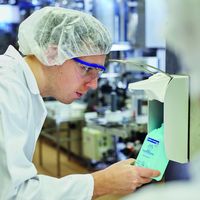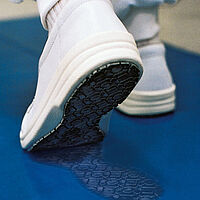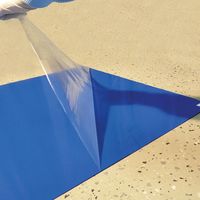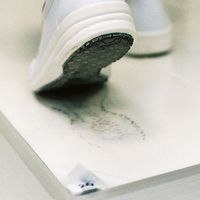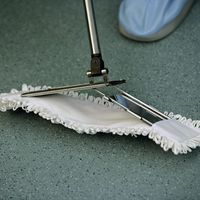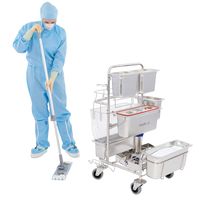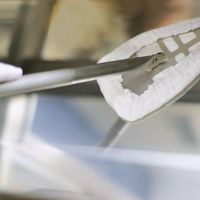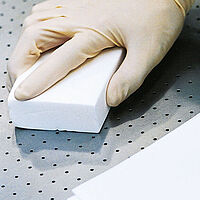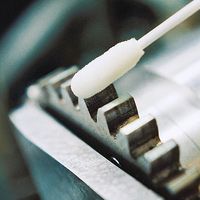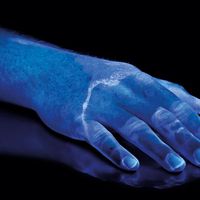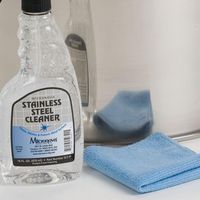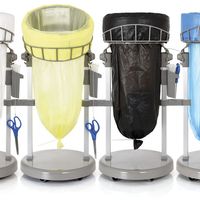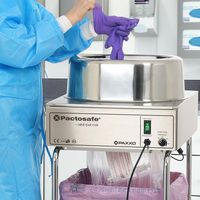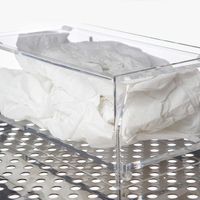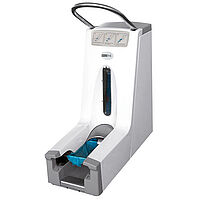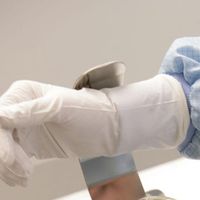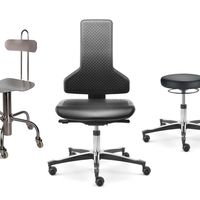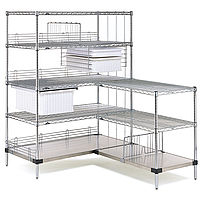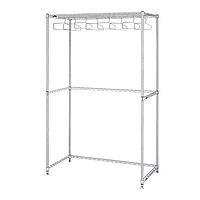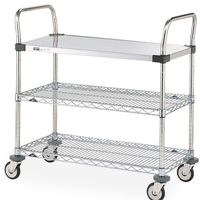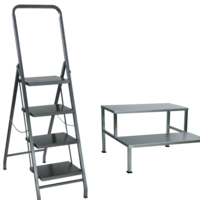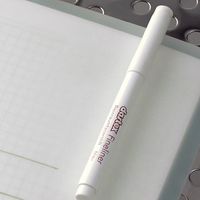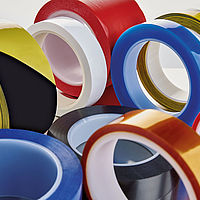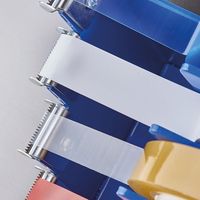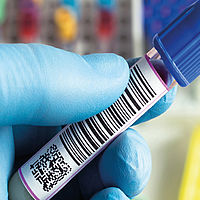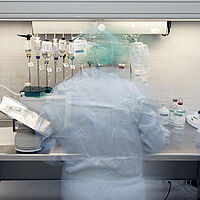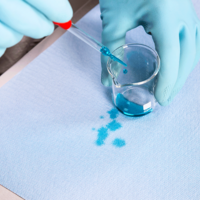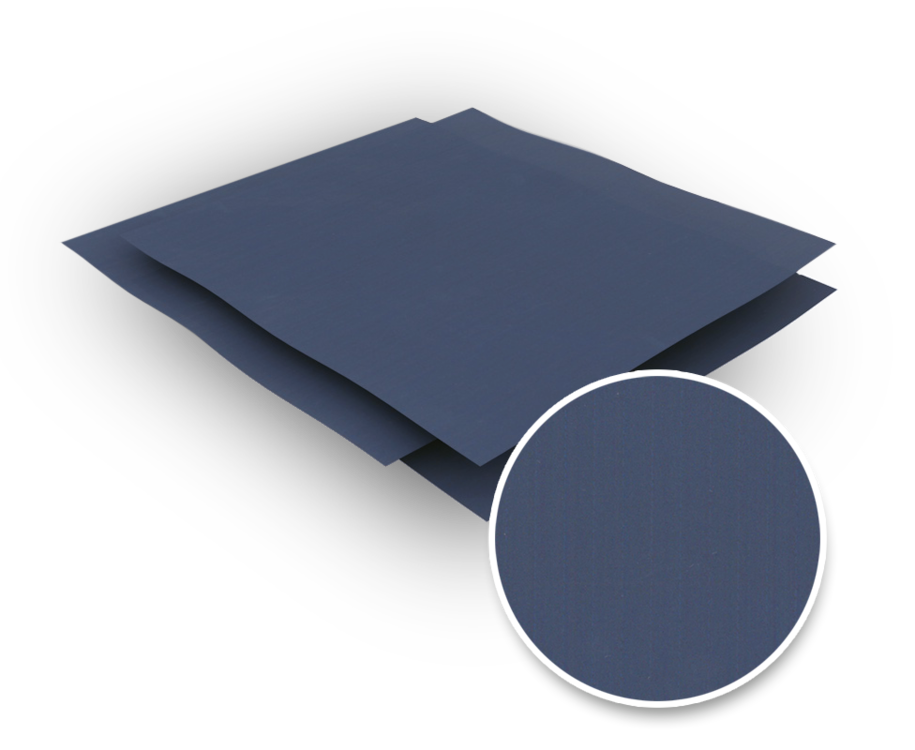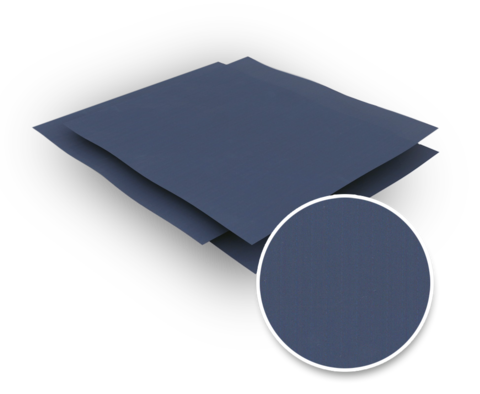The cleanroom fabric DASTAT-P is currently by far the tightest cleanroom textile in the Dastex product range and therefore has the highest particle retention capacity.
The fabric has antistatic properties and is also almost impermeable to liquids thanks to a polytetrafluorethylene finish. The textile has already proven itself in applications in which the wearer should be protected as far as possible against the penetration of liquid disinfectants through the cleanroom clothing (especially in the forearm area). The PFTE finish also provides good to very good protection for other water-based liquids. However, it must be emphasised that DASTAT-P has not been appropriately certified with regard to PPE protective properties at any point and therefore does not constitute a Personal Protective Equipment clothing.
Fabric properties Important properties at a glance
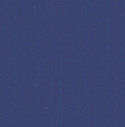
- LAir Permeability
- TWearing comfort
- PParticle retention capacity
- EElectrostatic behaviour
- AAbrasion resistance
Available colors
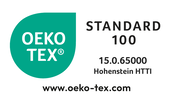
Product recommendation based on cleanroom classes
Air cleanliness class EN ISO 14644-1
particulate monitored areas
Hygiene zones according to GMP
microbiological monitored areas
Technical data
| (3) Fabric | 99% polyester, 1% carbon with polytetrafluorethylene (PTFE) finish (water-repellent) |
|---|---|
| (3) Distances of the electrically conductive yarn | in warp at 5 mm intervals |
| (3) Weave type | canvas |
| (3) Conductive material/yarn | Nega-Stat® P210 (polyester, carbon) |
| (3) Mass per unit area | approx. 88 g/m2 |
| (1) Air permeability according to DIN EN ISO 9237:1999-12 at 200 Pa | 5 L/(dm2 x min) |
| (2) Hydrostatic pressure testaccording to DIN EN ISO 811 | 91.7 cm/water column |
|
(1) Particle retention capacity against airborne particles (VDI 3926) Test duration: 60 minutes Raw gas concentration: 25 mg/m3 |
≥ 0.5 μm approx. 100% ≥ 5.0 μm approx. 100% |
| (3) Surface resistivityAATCC-76Electrical Resistivity of Fabrics (Reaffirmed - 2011) standard by American Association of Textile Chemists and Colorists | 106 - 108 Ohm |
| (1) Abrasion resistance referring to DIN EN ISO 12947-4Martindale method - assessment of appearance change | satisfactory |
The above-mentioned data are the results of investigations carried out by neutral textile research institutes and our suppliers to the best of their knowledge. They are not specifications but typical values at the time of publication.
All statements are without guarantee and changes are possible without prior notice.
Due to different test methods depending on the respective manufacturers and test institutes, the majority of the stated values cannot be compared one-to-one with those of other cleanroom fabrics.
(1) Values determined by the Institute for Textile and Process Engineering Denkendorf
In May 2017 the ITV Denkendorf merged into the public trust DITF Denkendorf.
(2) Values determined by the HYGCEN® Centrum für Hygiene und medizinische Produktsicherheit GmbH
(3) Manufacturer information
Test results after 50 decontamination cycles.
Synthetic fabrics can shrink up to 3% during the decontamination process.
If such a textile is additionally autoclaved, the shrinkage has an even stronger optical effect due to the associated formation of wrinkles.
Version 09/2019






